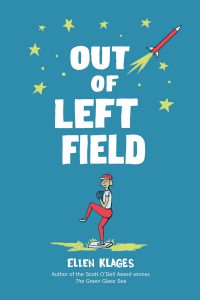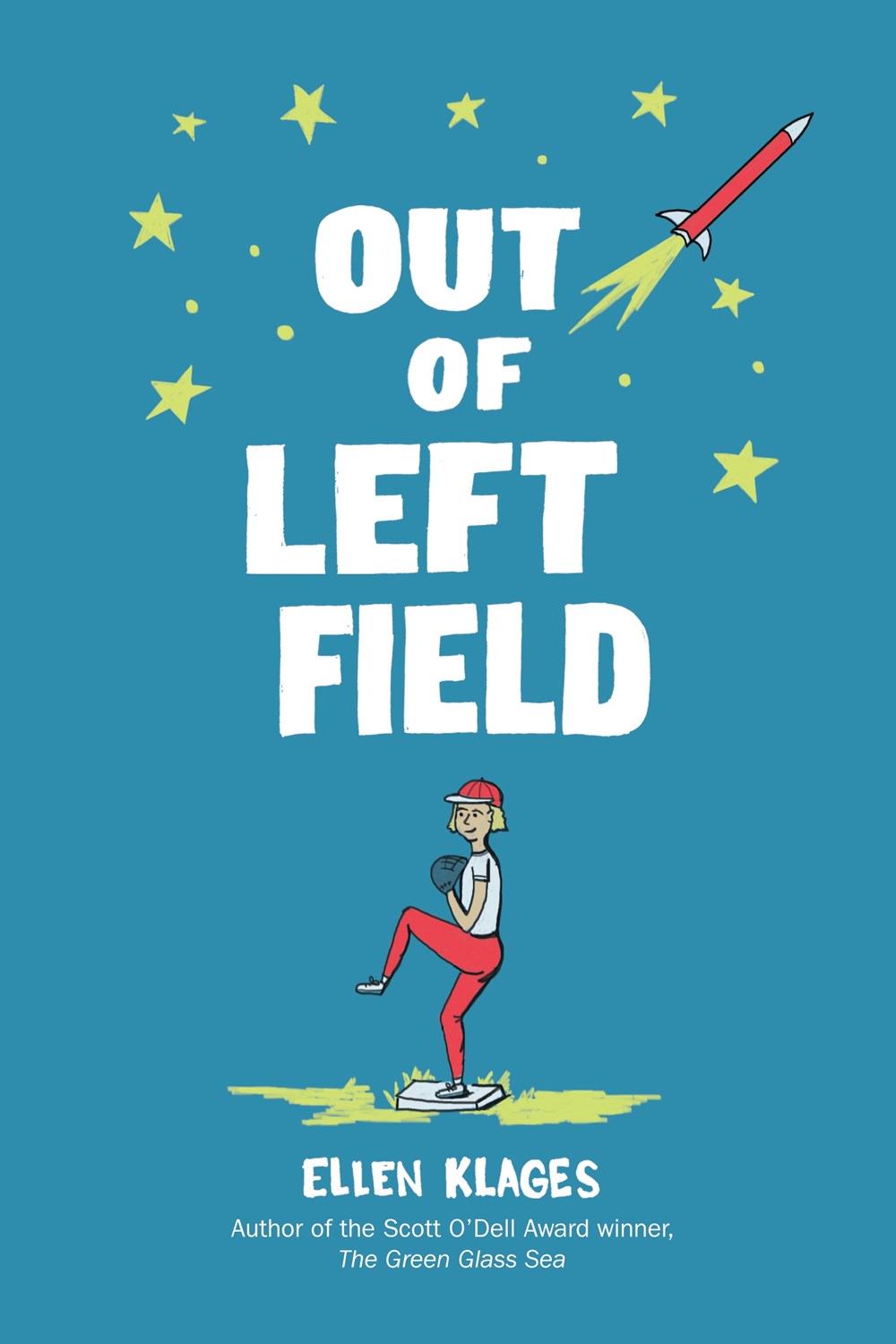 1957 is the year that Frisbees soared, postage stamps cost three cents, and the Russians launched Sputnik. It was also a time when women were typically kitchen-bound and wore skirts and aprons. However, Kathleen Curie Gordon’s mom is not a Betty Crocker mom; she’s a professor of nuclear chemistry. With a woman who resists convention as a mom and two older sisters playing from that same playbook, ten-year-old Katy, the protagonist in Out of Left Field by Ellen Klages, has learned to keep asking questions and to never settle for being ordinary.
1957 is the year that Frisbees soared, postage stamps cost three cents, and the Russians launched Sputnik. It was also a time when women were typically kitchen-bound and wore skirts and aprons. However, Kathleen Curie Gordon’s mom is not a Betty Crocker mom; she’s a professor of nuclear chemistry. With a woman who resists convention as a mom and two older sisters playing from that same playbook, ten-year-old Katy, the protagonist in Out of Left Field by Ellen Klages, has learned to keep asking questions and to never settle for being ordinary.
And Katy, who is more comfortable in cleats and a ball cap, is anything but ordinary. By placing her fingers on a baseball’s stitches so as to “disrupt the orientation of the spin axis, which changes the drag coefficient” (5), she has perfected her Sunday pitch, a combo-knuckler capable of striking out almost anyone at bat. Her pitching skills are so stellar, in fact, she gets scouted to play for a Little League Team. After all, “Little League is a true democracy [where any player] has an equal chance to make one of the teams, based only on skills with a ball and a bat” (37)—as long as that player is male.
Taking inspiration from the acronym Shazam and wired to believe that Gordon women don’t go down without a fight, Katy takes on the Little League. On her journey of discovery, she asks important questions, such as “Did what was inside my pants really count more than practice and skill?” (72).
When she encounters this example of “the worst kind of ignorance” (84), Katy’s mom explains that Katy needs to pick her battles, because “sometimes it’s a waste of time to beat your head against a wall that will never move. Even when you’re right” (92). Determined to prove her point and to enlighten the Little League Organization, Katy embarks on a mission to find the facts to support her argument. With support from her best friend Juliana Berg, aka Jules, Katy embarks on a research project to prove that baseball as an organized sport has not “always been the sole province of male athletes,” like the Organization claims.
Katy’s secret weapon is the library and the Reader’s Guide to Periodical Literature. However, the more she learns, the more frustrated she becomes and the angrier she grows. She soon realizes that when confronting the status quo, there are no easy answers.
As her efforts get thwarted, Katy loses some energy for her fight, but when her fifth-grade teacher Mr. Herschberger assigns a research project to “choose a person who made a difference, who demonstrated that freedom and courage and skill are at the heart of the American way of life” (148), he reignites Katy’s passion.
Katy goes on to encounter some important figures, like Toni Stone, “the gal guardian of second base” (220) who played in a very different America as a female in the Negro Leagues. Stone tells her about other female baseball players and the Western Bloomer Girls, facts that history seems to have erased.
In addition to its historical elements and multiple morals, Klages’ book presents an important reminder to writers: “No one ever writes a perfect first draft” (75), even a professor of nuclear chemistry. Through Katy, the author not only reveals how dedication, discipline, and drive have the power to produce positive results but reminds all readers about the value of letting criticism and taunts wash over us as a price to engage in our passions.
- Posted by Donna

